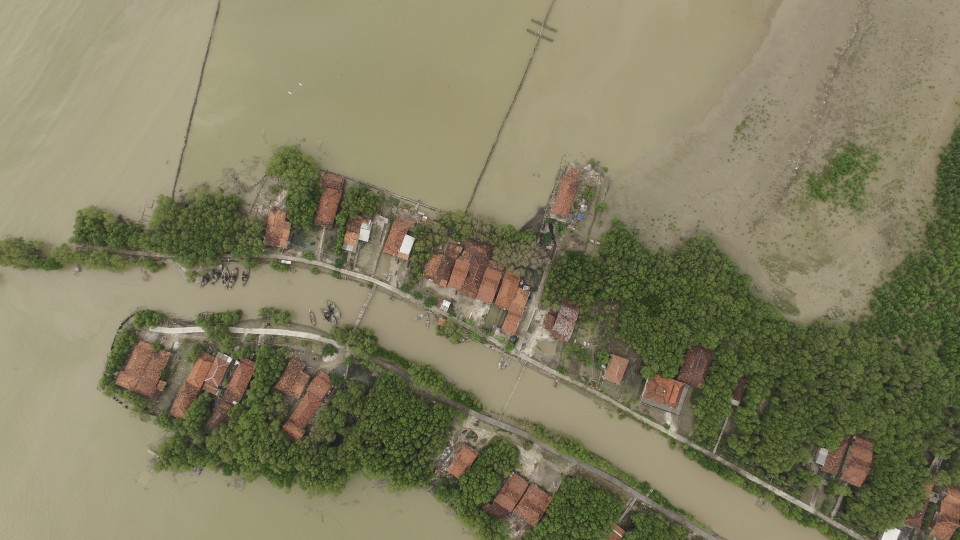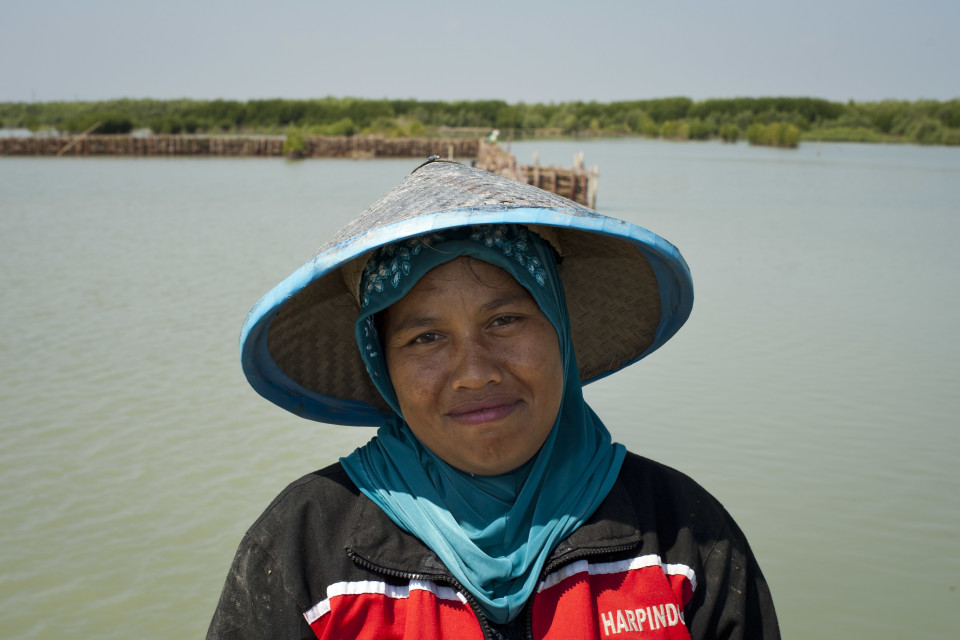
New series of mangrove restoration works on eroded coast in Java
-
Aquaculture, fisheries and coastal agriculture
-
Coastal resilience
-
Coastal wetland conservation
Java – Indonesia has started with the construction of a new series of permeable structures in front of its severely eroding coastline. The structures capture sediment to recreate a stable environment for mangrove forest recovery. The coastal works are part of a largescale project called ‘Building with Nature Indonesia’ to enhance coastal safety in which the government collaborates with Dutch and Indonesian partners.
700 meters of permeable structures are being constructed in Bedono and Wonorejo, the most severely eroded sites in the area, which both lose hundreds of meters of land to the sea each year. The brushwood structures dampen the incoming waves, creating a sheltered area behind them where mud is trapped, so mangroves can regenerate and avoid further erosion. The aim is to work towards the original coastline before it started eroding.
The construction work has to finish before the start of the monsoon in December as the monsoon may further accelerate erosion of the fragile deforested coastline. By placing the structures before the monsoon, the sediment capture is maximized and safety is enhanced.

This is the second year of the pilot in which permeable structures are built. In some plots more than 50 cm of sediment was trapped behind the grids placed last year. Monitoring however also showed that some structures were damaged during the monsoon, resulting in loss of sedimentation.
During the project different materials and techniques are tested and used, depending on the circumstances of the specific site. The tests will help improve the lifetime and robustness of the technique for further upscaling of the concept in Demak and in other erosion affected areas in Java where in total 30,000 people already regularly suffer from coastal flooding.

The programme also introduces a more sustainable aquaculture regime, thereby preventing the new removal of mangrove belts for shrimp farms and boost more stable incomes. The restored mangrove belt will also help to restore biodiversity and the natural fisheries in the region.
The permeable structures technique is already used by the Dutch for salt marsh restoration for 100 years. Knowledge Institute Deltares came up with the idea of applying the concept to mangrove restoration in the tropical muddy coasts. The actual construction work in Indonesia is done by contractors that hire staff from local communities under the guidance of consultancy firm Witteveen+Bos and NGO Wetlands International in partnership with the Indonesian Ministry of Marine Affairs and Fisheries. Collaboration with communities is also central for support and commitment to protecting the structures and the regenerated mangrove belt.
The Building with Nature programme will take five years in total and is a joint effort of the Ministry of Marine Affairs and Fisheries of Indonesia, the Ministry of Public Works and Public Housing, Ecoshape and Wetlands International, in partnership with consultancy agency Witteveen + Bos, Deltares, Wageningen University & Research Centre, IMARES and UNESCO-IHE, Indonesian NGO Blue Forests, with support from the Diponegoro University, and local communities.
For more information, contact:
Yus Rusila Noor, Wetlands International Indonesia: [email protected]
Tom Wilms, Witteveen + Bos Indonesia: [email protected]
For the restoration approach, watch the Building with Nature Indonesia video and animation.
